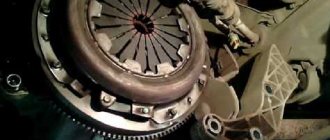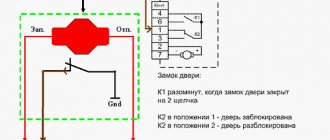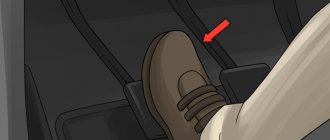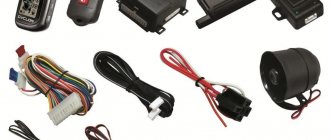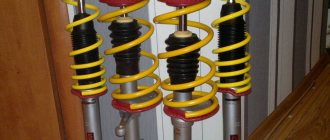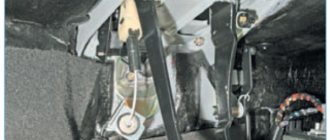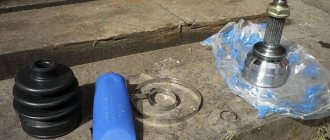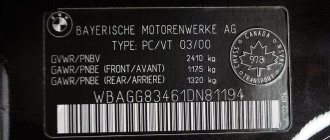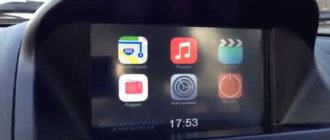Imagine this situation: there are no auxiliary parts between the engine and gearbox. They are connected directly. Do you think the car will be able to drive? Hardly. The only thing you will achieve is strange intermittent movements of the car, as well as a further complete stop of the engine. If this ever happens, your box won’t last long, and within three days it will simply break. Moreover, problems with the engines themselves will overtake you as suddenly as replacing the gearbox. The prospect is not very good, you will agree. But, fortunately, in order to avoid such embarrassment, engineers came up with a clutch.
The main purpose of this device is to smoothly connect the engine and gearbox for their further functioning. If we omit all the terminology, then the clutch is necessary in order to turn off the torque. One of the biggest advantages when using this device is that if you have it, you don’t have to worry about the transmission deforming when braking at high speed. The use of such a device allows you to avoid expensive repairs that might be necessary in its absence.
Clutch operating principle
Let's start looking at the principles of operation with the most common option today - a dry clutch. Or single-disc. It works on the principle of compressing several elements of the car - the pressing surface, disc linings and flywheel. The device uses special springs that press the above parts of the car against each other. Thanks to this, the clutch receives the torque shaft after the torque is transmitted to the latter from the clutch disk. After pressing, the drive system is activated: the bearing begins to press on the release pipes, and the surface is separated from the specialized disc (clutch).
After the above processes, the input shaft stops. Even though the engine is still running. There is also a double-disc version. Its only difference is that there are two working surfaces. Accordingly, there are also two disks. At the same time, their work scheme is similar.
Design features
The clutch consists of two main components - the drive and the mechanism itself. The drive ensures the transmission of force from the driver to the mechanism, and the mechanism directly disconnects the motor from the gearbox.
There are several types of drive used on cars:
- mechanical - the force in this type is performed through a system of levers and rods or through a cable;
- hydraulic - in which the driver’s effort is carried out by fluid;
- pneumatic - the force is carried out by air under pressure, used on freight transport and agricultural equipment;
- electronic - sensors monitor the position of the clutch pedal, and the electric motor turns it on or off.
Whatever type of drive is used on the car, it has one task - to transfer the driver’s force to the mechanism for disconnecting the engine and gearbox.
But the disconnection is performed by the clutch mechanism. It is divided into several classifications:
- According to work environment. There are dry and oil clutches. As for cars, the dry version has become widespread.
- By the number of driven disks. Single-disc, double-disc and multi-disc are used.
- According to the disc spin elements. In some, the disc is separated by means of spring-loaded levers, in another type - by a spring diaphragm.
The single-plate dry clutch is the most common type in passenger cars. In robotic boxes, it is possible to install a two-disc one.
How do you know when it's time to change the clutch?
It is not difficult to recognize the breakdown of this part of your car. So, here are a few signs that indicate that this part of the car is worn out.
A loud noise that will be heard when the clutch is disengaged. If you still hear it, it means that the release bearing is faulty. This is fraught with consequences - high gasoline consumption over short distances.
Also, one of the most important indicators of breakdown is that the wheels slip when the pedal is released. The discs are rolled idle, which leads to their heating. Due to such improper use, they can also soon become deformed. This is not the only problem. Due to such problems, friction linings also sometimes burn out, which can cause an unpleasant, pungent odor to leak into the car’s interior.
Remember that driving with a faulty clutch is dangerous and can create an emergency on the road!
How do you know when it’s time to change the clutch without going to a service station? Very simple! You just need to accelerate a little (to a speed of about 60-70 kilometers per hour) and see if your discs are slipping. By the way, it also happens that things don’t even come to the point of slipping - the driver sees that the engine is working at full power, but the required speed is not achieved. This is the most important indicator that the clutch is not functioning properly.
Causes of slippage
Most often, VAZ-2107 owners complain that their faithful iron horse is slipping. Let's look at the causes of the analyzed breakdown:
- The main reason is the penetration of oil substances into the clutch system. Eliminating this problem is quite simple - using a rag soaked in gasoline or white spirit to wipe all parts on the surface of which oil is found. Next, you will need to thoroughly clean the friction attachments using sandpaper, which will eliminate slipping.
- Long-term use of friction linings that have not been replaced in a timely manner can also lead to clutch slipping. Worn linings reduce the free play of the pedal, which causes slippage. Of course, they cannot be repaired, so they must be replaced.
- Failed pressure springs are another cause of slippage. An insufficiently elastic element is not able to create the required pressure on the clutch disc, so they need to be replaced with new and high-quality ones.
- Insufficient pedal travel can cause the clutch to slip. The normal range can vary from 25 to 35 mm. A regular ruler will help you determine whether free play is normal. Using a measuring device, you need to measure the distance from the pedal to the central part of the platform.
Release bearing wear
Release bearing wear manifests itself as follows.
When you press the clutch pedal, you hear a loud buzzing noise. The mechanism begins to function and puts a load on the deformed bearing, hence the sound.
In addition, another indicator is also the strange vibrations that appear the moment the car starts moving. The release valve is replaced as necessary.
Hydraulically operated release bearings have some other problems. The clutch pedal becomes very soft and it stops working, and brake fluid leaks out. And the clutch also stops working. A working clutch works as follows: torque is transmitted very smoothly. The car behaves smoothly on the road, without jerking or slipping. There are no unnecessary sounds when changing speeds. The pedal is easy to press and the car does not make any strange sounds.
Which release bearing is best for Kalina based on price and manufacturer?
We recommend choosing the clutch release bearing for the Lada Kalina according to the table below. The list contains information on the best manufacturers of spare parts of this type (which is better, according to reviews from auto repair shops/motorists): price, number (article), manufacturer, equipment.
Recommended bearing manufacturers, articles and prices
| No. | Manufacturer, country | Catalog number | Price, rubles |
| 1 | Sachs, Germany | 3151600526 | 500 |
| 2 | Master-sport, Germany | 21703-1601180ST-PCS-MS | 500 |
| 3 | LuK | 500104010 | 450 |
| 4 | INA | 21703-1601180-10 | 400 |
| 5 | Trialli | ST190 | 470 |
In the table you will find out exactly how much a release bearing for Kalina costs. Before buying a spare part, look at the original photos and technical specifications, which are given there. We also recommend watching a video with an overview of push couplings.
VP number according to GOST: 6-520806ES23 (or 520806K1U - produced by VBF, Vologda).
Articles according to the VAZ catalog:
- pressure ball bearing - 111-1601182;
- coupling assembly – 21100-1601180-02;
- bolt - 2108-1601207;
- driven disk - 11186-1601130.
Review of clutches for LADA:
Clutch basket
The clutch basket is considered one of the strongest parts of this system. It can withstand loads several times greater than other parts. Although we do not advise you to experiment with it - it tends to overheat. And this is fraught with particle explosions, which in the future can damage not only the car body, but also its engine.
In general, the clutch system is considered very reliable and inexpensive. It can be changed very rarely, since it is considered quite hardy. However, this endurance depends on many factors. Including location and driving style. If you like aggressive driving and high speed, then, of course, your clutch will wear out much faster than, say, a driver who prefers not to accelerate and drive at average speed.
Signs that the clutch is faulty
Signs of clutch problems depend on how much the vehicle is used. There is a malfunction of the clutch itself and its drive. The first category includes:
- wear of the driven disk linings;
- jamming of the clutch release fork;
- damage to the driven disk;
- wear of the flywheel or pressure plate surface;
- reducing the force of the diaphragm spring;
- bearing failure to engage the clutch.
Breakage or rapid wear of clutch parts occurs when the rules of vehicle operation are violated. Most often this involves keeping your foot on the clutch pedal while driving. Often a breakdown can be determined by external signs. To determine a specific malfunction, it is necessary to disassemble the entire system.
External signs of a problem:
- the presence of jerks in work;
- incomplete switching on and off;
- loud noise when engaging the clutch;
- presence of vibrations when turned off.
Incomplete shutdown makes it difficult for the driver to change gears. This results in noise and crackling noise.
If the clutch begins to “slip”, you can feel a specific smell that occurs when the friction linings of the driven disc burn.
One of the most common symptoms is a crunching noise when engaging reverse gear. To check its presence immediately after starting the engine, you must engage reverse gear. It may not just be a crunching sound, but rather a rather loud ringing sound. It indicates wear on the driven disc. If it is not possible to engage second gear at all, then you must immediately contact a service station.
Often, if there are problems with the clutch, the car jerks when starting to move. If such jerks do not disappear as the speed increases, then this is a clear sign of a breakdown.
Critical wear of the unit is indicated by sluggish acceleration with increasing engine speed. To check this, you need to sharply press the gas pedal while driving quietly in third gear.
Experts recommend recording all present signs of problems in advance. If a car with a faulty clutch remains in motion, you should carefully drive it to a garage or service center. In this case, you need to drive as carefully as possible, do not accelerate too much.
Characteristic
The clutch system is a separate design that allows the drive shaft of the motor to be disconnected from the mechanical drive to the drive wheels for a short period of time. This is done to switch to a higher or lower transmission gear. Also, with the help of the clutch, they achieve smoothness when turning on and off the load on the internal combustion engine. This helps prevent damage to the crankshaft of the power unit.
For all vehicles with a manual transmission, the clutch device is standard. So, it consists of a flywheel, a driven disk, a “basket” and a release bearing.


